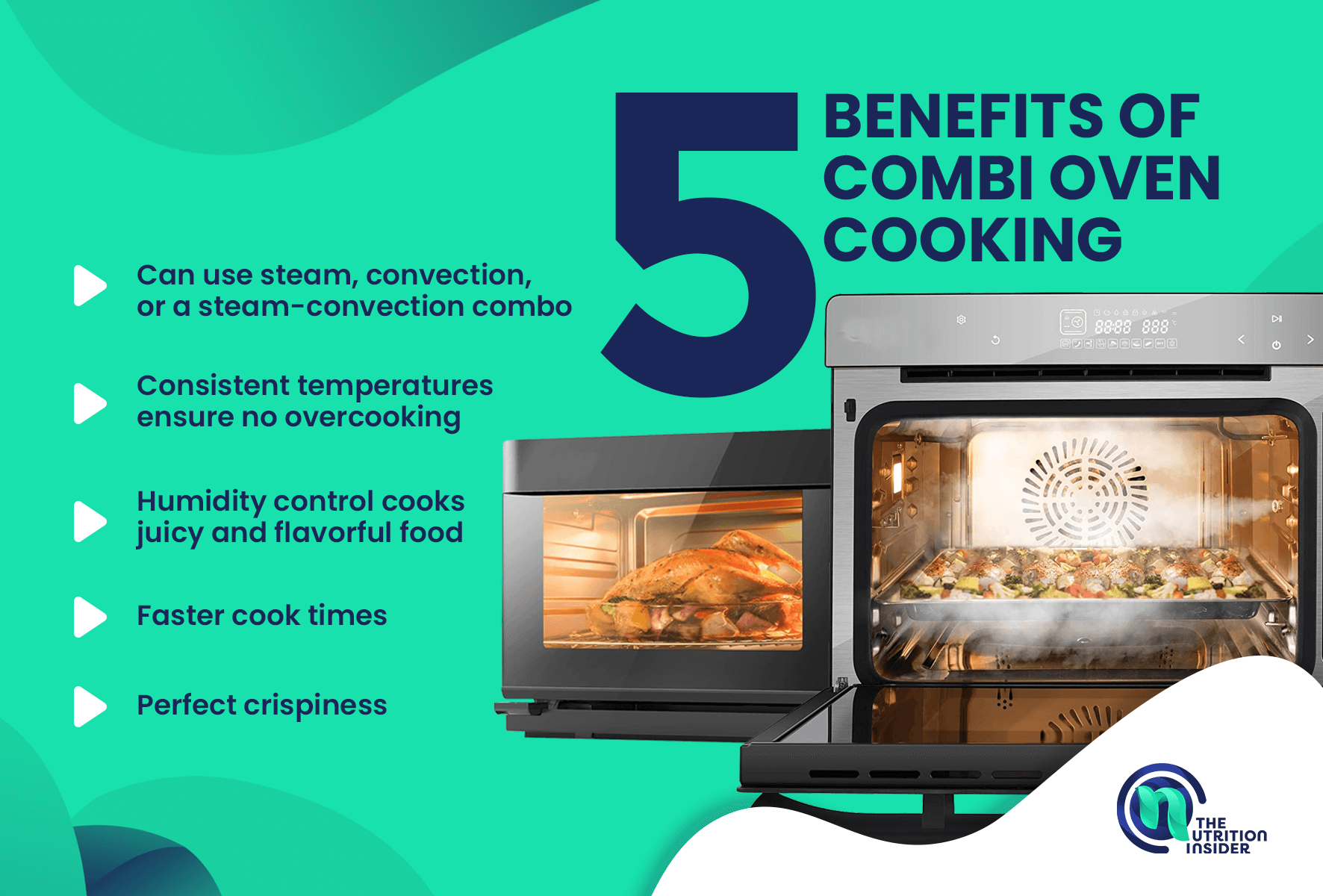Talk to a Registered Dietitian and use INSIDER20 for 20% off!
Talk to a real Dietitian for only $99: Schedule Now
Evidence Based Research To fulfill our commitment to bringing our audience accurate and insightful content, our expert writers and medical reviewers rely on carefully curated research.
Read Our Editorial Policy
If you’ve ever mastered a perfectly roasted chicken in your oven one day, and then the next time, it’s dry and rubbery even though you didn’t do anything differently, the imprecise and inconsistent heating of your conventional oven may be to blame.
But what’s the solution?
In the past, only restaurants or commercial chefs have had access to the precise and versatile cooking that comes with a full-size combi oven—but now, these appliances are smaller in size, more affordable, and readily available for every aspiring home chef to cook, steam, roast, braise, and bake everything to perfection.
If this sounds great, but you’re not entirely sure what a combi oven is, we’ve got you covered—keep reading to find out how combi steam ovens work, the pros and cons, and the most frequently asked questions about these unique appliances.
Combi ovens—short for combination ovens—are essentially three-in-one ovens that allow you to cook with steam, convection (hot air), or a combination of the two.
These options give you better control of temperature and uniquely allow you to control humidity, providing precise and consistent outcomes with whatever you cook.
Cooking with steam enables you to steam vegetables and rice to the perfect texture or poach fish, while convection cooking circulates dry heat to bake bread and pastries or roast meats.
When used together, the dry heat and steam duo produces moist and flavorful meats and vegetables, but with the bonus of browning that comes from convection heating.
A professional-level combi steam oven at a fraction of the commercial price is the Anova Precision™ Oven, which perfectly controls the temperature and humidity, allowing you also to defrost, reheat, dehydrate, air fry, or cook in sous vide style—all in one microwave-sized appliance that fits on your countertop.
Although they seem complicated, combi steam ovens are actually quite simple.
A fan—or multiple fans—will circulate dry heat evenly throughout the appliance, similar to commercial-grade convection ovens.
You can use the oven just like this, which is perfect for baking bread or making French fries, or turn on the “combi” part and utilize the steam function.
The oven will inject water or steam into the oven, which raises the humidity to a precise level, locking in flavors and moisture and resulting in quicker cook times.
Conversely, combi-steam ovens can also remove moisture from food by releasing steam, leading to perfectly crisped skins or dehydrated food.
You can also solely use the steam function, which is ideal for poaching vegetables or seafood—this mode simply uses circulating steam to create a moist heat cooking environment.

While there are plenty of advantages of using these appliances, a few downsides still exist—let’s take a look at both.
However, there are a few disadvantages of combi ovens, including:
Convection is one component of a combi oven, which combines steam and dry heat.
However, convection ovens solely utilize circulated dry heat with no steam component.
A combi steam oven can provide most of the same effects as a microwave—with the downside of not being able to pop microwave popcorn—but a microwave cannot do everything that a combi oven can do.
The two appliances also use different methods of heating, as microwaves use, well, microwaves and combi ovens utilize steam and convection.
There are also combi microwaves on the market, which have a fan function and a heating element on the top.
Yes, combi steam ovens will cook food faster than a traditional oven.
Yes, pizza is great to cook in a combi oven, as it can create a crispy crust without burning the toppings.
Yes, combi steam ovens allow you to defrost food more quickly than using a microwave oven.
Although it may differ for each brand, Anova describes how to clean their precision oven in this way:
– Clean the appliance interior after each use, as fat accumulation or other food can result in a fire.
– Clean stubborn dirt with an oven cleaner.
– Clean the front of the appliance with a soft cloth with warm water and a cleaning agent.
– Use a stainless-steel cleaner to clean the metal surfaces.
– Use a mixture of distilled vinegar (a few drops) and warm water to sponge off mineral buildup on the bottom of the interior.
– Do not use abrasive scrubbers or cleaning agents, as they can cause damage to the oven.
Yes, you can steam pasta to create typically cooked pasta or use the combi feature to make baked pasta dishes.
Yes, you can wrap your food or cover trays or baking sheets in foil when cooking in a combi steam oven.
However, never place foil on the floor of the oven or touch the oven’s walls with the foil, as it can cause damage.
Yes, you can bake cakes in a combi steam oven—the precise steam control keeps cakes and other pastries moist and fluffy.
1 Comment
What is the best way to cook frozen pastry parcels in a combi oven?